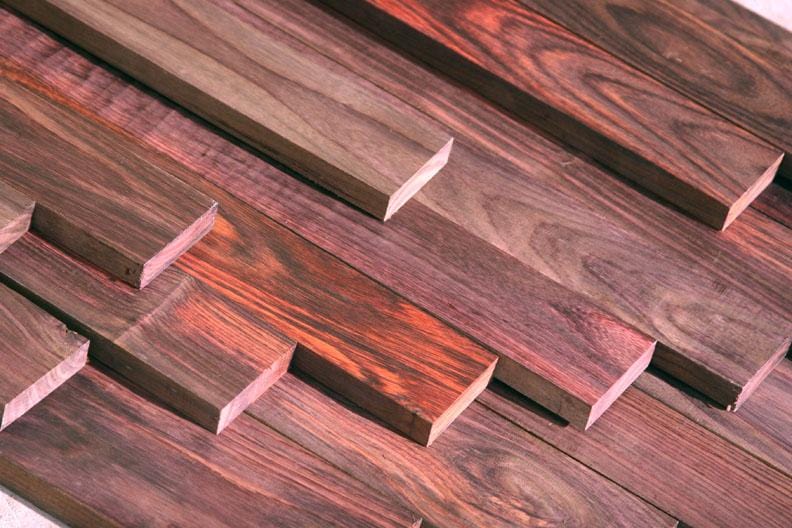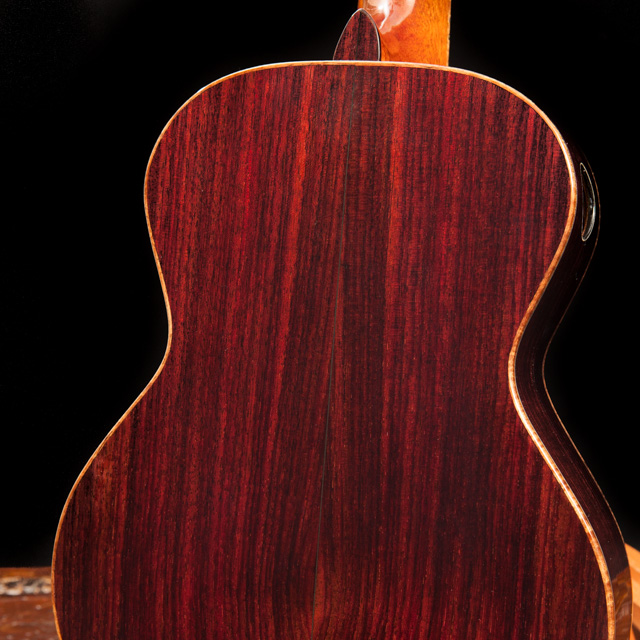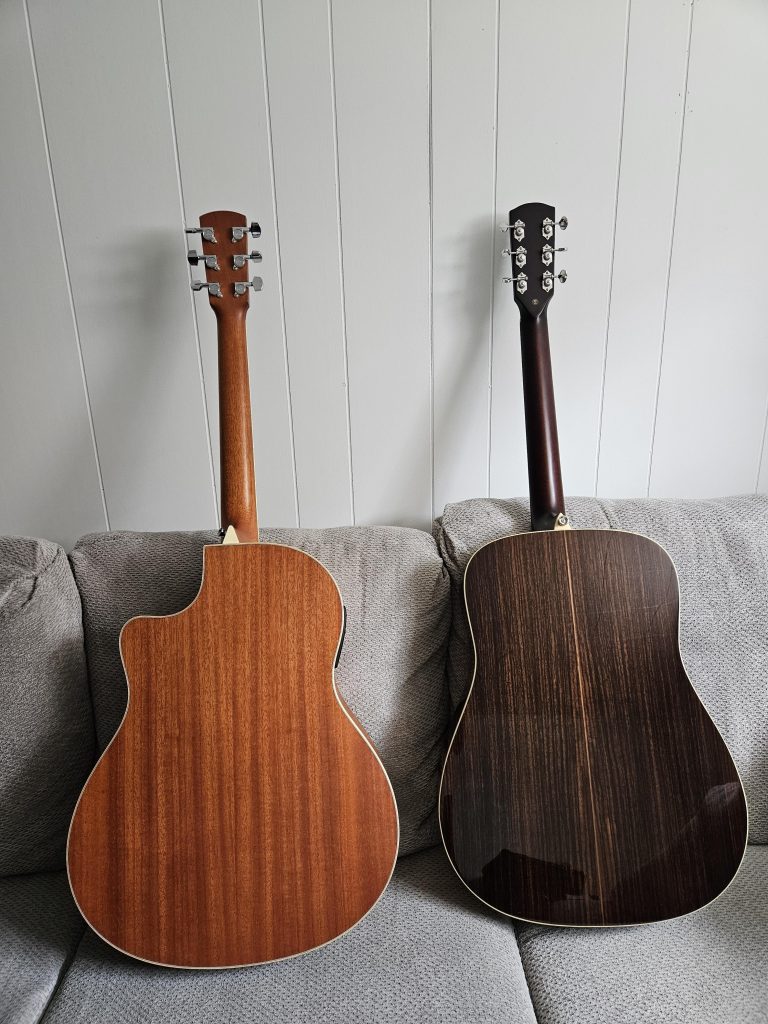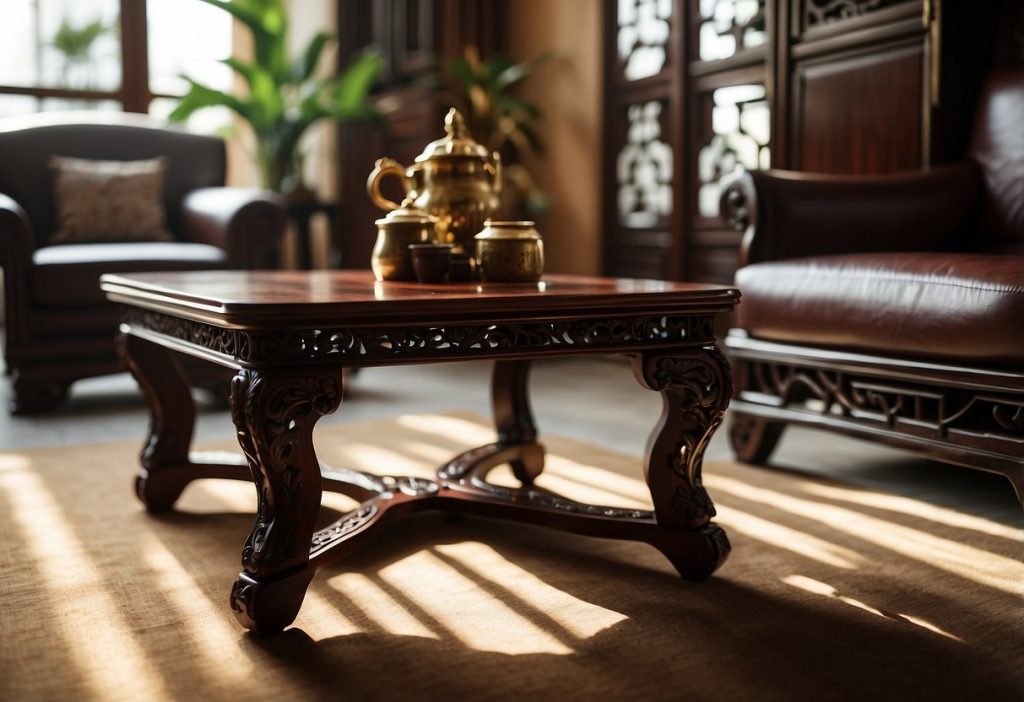If you have landed on this blog post, it means you have been confused by what people in the market refer to as Rosewood and Sissum (or Shisham or Sissu). They seem synonymous to each other, yet when you look at the product physically, there is a clear difference which also inevitably dictates the pricing.
When it comes to the world of rosewoods, there are 2 major predominant Rosewood species that grow in India, each with its unique characteristics and uses.
- 1. Dalbergia latifolia (East Indian Rosewood)
- 2. Dalbergia sissoo (AKA Shisham)
Let’s delve into the differences between these two fascinating trees.
Dalbergia latifolia, commonly known as East Indian Rosewood, is native to the low-elevation tropical monsoon forests of Southeast India. It thrives in regions with a warm climate and is often found in dense, single-species groves. This tree can grow up to 40 meters (130 feet) tall and has grey bark that peels in long fibers. Its heartwood varies from golden brown to deep purplish brown with darker streaks, and it has a medium texture with good natural lustre. Known for its durability and resistance to rot and insects, this wood is highly valued in furniture making, cabinetry, musical instruments, and exotic veneers. Its high density and strength make it a preferred choice for premium products. However, it is slow-growing and has been extensively harvested, leading to its classification as vulnerable on the IUCN Red List. Conservation efforts are in place to protect and sustainably manage its populations. While it is highly durable, its interlocked grain can make it challenging to work with, often dulling cutting edges. It also has a distinct rose-like scent when being worked, and is very strong.
On the other hand, Dalbergia sissoo, also known as North Indian Rosewood or Shisham, is native to the foothills of the Himalayas, ranging from Afghanistan to India and southern Iran. It prefers riverbanks and can withstand a wide range of temperatures and soil types. Typically reaching heights of up to 25 meters (82 feet), this tree has a light crown and often crooked trunks. Its heartwood is golden to dark brown, sometimes with darker streaks, and it has a coarse texture. This wood is widely used for furniture, flooring, and as a shade tree. It is also a popular choice for making boats, skis, and carvings due to its strength and workability. In contrast to D. latifolia, D. sissoo is a fast-growing and hardy tree, making it less vulnerable to over-exploitation. It is listed as Least Concern on the IUCN Red List. This wood is easier to work with and is known for its excellent finish and polish. However, it can develop thick surface roots that may lift pavements and foundations if planted too close to structures.
Here’s a Comparison Table
| Feature | Dalbergia latifolia (East Indian Rosewood) | Dalbergia sissoo (North Indian Rosewood) |
| Origin | Southeast India | Foothills of the Himalayas |
| Height | Up to 40 meters (130 feet) | Up to 25 meters (82 feet) |
| Bark | Grey, peels in long fibers | Light crown, often crooked trunks |
| Heartwood Colour | Golden brown to deep purplish brown | Golden to dark brown |
| Texture | Medium texture with good natural luster | Coarse texture |
| Uses | Furniture, cabinetry, musical instruments, exotic veneers | Furniture, flooring, boats, skis, carvings |
| Growth Rate | Slow-growing | Fast-growing |
| IUCN Status | Vulnerable | Least Concern |
| Workability | Challenging due to interlocked grain | Easier to work with, excellent finish |
| Special Characteristics | High density, distinct rose-like scent when worked | Thick surface roots can lift pavements |
| Looks & Pattern |  |  |
Both East Indian Rosewood and Shishum are remarkable, offering unique benefits and challenges. Whether you’re a woodworker, a conservationist, or simply a nature enthusiast, understanding these differences can help you appreciate the distinct qualities of these two rosewoods.
As you can understand from the above detail of Rosewood, Shisham due to the abundant availability in norther India, specifically near Assam where it is not confined to growing in natural forests the cost of the timber is very economical however it is not as appealing or luxurious as the East Indian naturally forest-grown Rosewood in South India. If you are looking for an exotic luxury timber that oozes richness with beautiful beetroot red, purple colours and visibly eye-catching grains then South Indian Rosewood (not Shishum) is what you are after. This is certainly more expensive that ‘Shishum’ rosewood.
The easiest way to see this is to visit a music store that sells Guitars and you’ll notice a whole range of pricing on guitars, some of the most expensive ones would be having a dark fretboard and body which uses the East Indian Rosewood and others which look similar but not as rich would be priced lower.


We can safely conclude that popular Rosewoods available in India are not all the same and certainly Shishum (or Sisoo) is not the same as East Indian Rosewood. Whilst both are really good timbers, East Indian Rosewood is a far more superior timber due to its natural growth resulting is the rich colour, fiber and strength.
At Harsha Timbers, we are proud to be amongst a handful of stockists in India to sustainably source and supply East (South) Indian Rosewood. We are privileged to have supplied East Indian Rosewood timber to esteemed celebrities and clients in India and abroad.
Interesting fact: Did you know that exotic timber building elements and furniture appreciate the value of your home over time. It is the only building element that appreciates in your house besides land.
References: Worldagroforestry.org, Useful Tropical Plants

